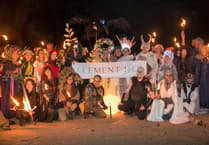Manx National Heritage (MNH) has raised concerns regarding a proposal to place a statue of King Orry next to Tynwald Hill, urging a careful evaluation of the potential risks and impact on the site’s archaeological and cultural significance.
MNH, which is responsible for the protection of the Isle of Man’s cultural heritage, has highlighted the importance of assessing the impact of such a development on Tynwald Hill and its surroundings.
The organisation argues that the project could have substantial archaeological consequences, especially with the creation of a plinth, a pathway, and the necessary infrastructure, such as a buried electrical supply for lighting.
Tynwald Hill, located in St John’s, is one of the Isle of Man's most iconic landmarks, with deep historical and archaeological significance.
The area is known for its wealth of ancient monuments, ranging from Bronze Age burial mounds to medieval cemeteries.
MNH has long advocated for Tynwald Hill to be recognised as a UNESCO World Heritage Site due to its international importance.
In its response to the planning application, MNH pointed out that it had not been formally consulted on the details of the proposal before it was made public.

The organisation expressed concerns that such a development could disturb the fragile archaeological landscape, which could include undiscovered Viking and medieval remains.
‘MNH strongly recommends that the planning application include a thorough evaluation of the site, including geophysical surveys and test excavations,’ said Andrew Johnson, the Inspector of Ancient Monuments at MNH.
‘Given the rich archaeological heritage in the area, a careful and professional approach is essential to avoid unintended damage.’
The MNH report also raised questions about the historical accuracy of the proposed statue.
The figure of King Orry, often equated with Godred Crovan, a Viking king, is considered by some to be more myth than history.
While the legend of King Orry is popular in Manx culture, MNH noted that there is little concrete evidence to substantiate his association with the Isle of Man beyond the realm of folklore.
The organisation highlighted discrepancies in the portrayal of Godred Crovan in recent media coverage, emphasising that much of the historical narrative surrounding the figure is based on myths, rather than verifiable facts.
This, MNH argued, raises concerns about the accuracy of the proposed statue’s representation of the semi-legendary figure.
The proposed location for the statue, just outside the walled assembly precinct of Tynwald Hill, has also been scrutinised.
MNH warned that the sculpture could diminish the prominence of Tynwald Hill, as it would be almost as tall as the Hill itself.
It adds that the setting of Tynwald Hill could be disrupted by the presence of the sculpture, which could affect the appreciation of the monument's significance.
MNH concluded by reiterating its belief that careful consideration must be given to the potential consequences of installing a statue in such a historically rich and sensitive area.
It called for a more comprehensive assessment, both of the visual and archaeological impacts, before any final decisions are made.




